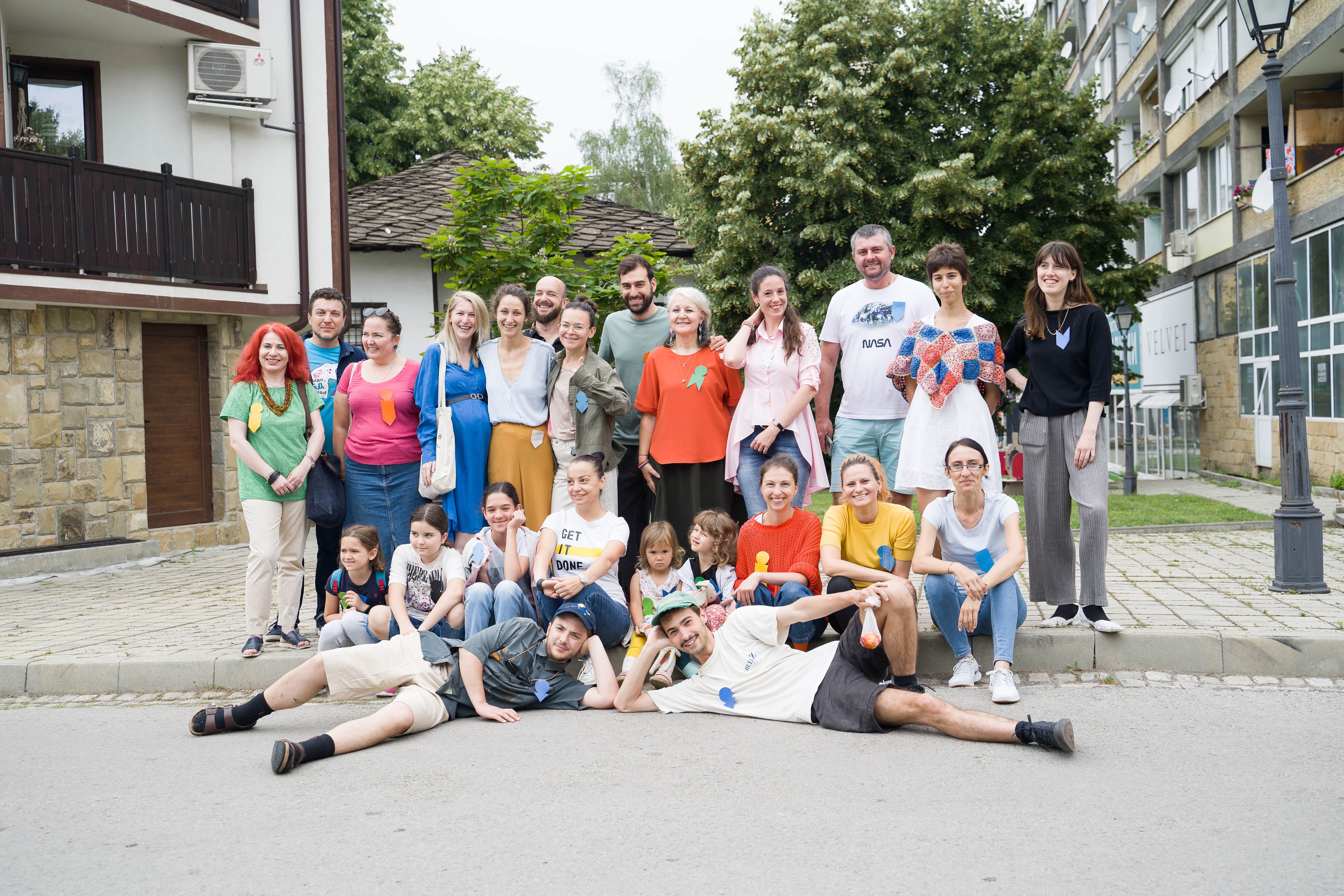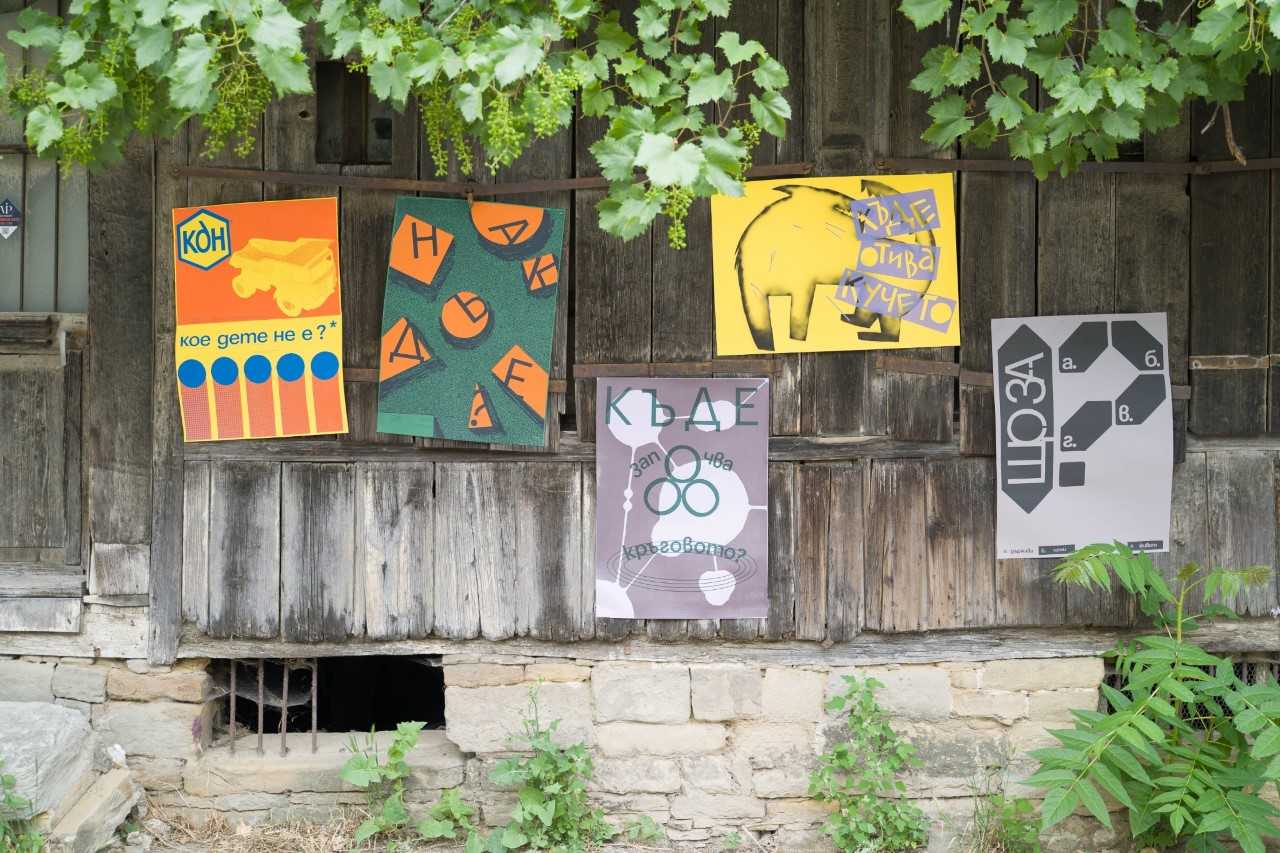Urban Renewal through Creative Collaborations: An Interview with Milka Kehayova on the CINEMA Project
18-08-2023
In the pursuit of urban revitalization and the restoration of city centers, innovative approaches are essential to address the challenges posed by industrial transformations, shifting consumer behaviors, and the impact of suburbanization. One beacon of hope in this endeavor is the CINEMA project, a transnational initiative for urban regeneration in the Danube Region. To shed light on the project's journey and its remarkable impact, we had the privilege to interview Milka Kehayova from Gabrovo Municipality in Bulgaria.
August 15, 2023

Cinema project team in Gabrovo city, Bulgaria.
1. What were the main outputs of the project in Bulgaria?
During the pilot activities conducted within District 6 of Gabrovo city under the CINEMA project, we tried to apply comprehensive approach that encompassed the region's most significant issues and hurdles. Our focus was on tackling several key needs: fostering a greater presence of retail businesses and services, promoting cultural and creative initiatives, and creating an engaged community dedicated to revitalizing the locality.
The pilot actions in District 6 started with its analysis resulting in establishing contact with owners of vacant properties. As a result, we successfully identified four unoccupied floor spaces ideally suited for the establishment of retail ventures, small businesses, and creative industries. As the next phase, an open call for project proposals was launched, aiming to select initiatives to occupy these four vacant spaces over a two-year period. The outcome of the open call resulted in three of the four vacant spaces in District 6 being occupied by new businesses.
At the same time the CINEMA team prepared a 10-day cultural programme which took place in District 6 in June 2022. Different cultural producers, creative organizations and independent artists, local and foreign cultural institutes took part, offering a variety of art events, creative workshops, exhibitions of local and foreign artists, a public discussion on design and fashion, visual transformations in the pilot location, theatrical performances, and literature city tours. The aim was to show off the hidden potential of District 6 for small and retail business and for creative industries and to transform it into an art and tourist hot spot.
Parallel to these activities, textual and illustrative material was collected on the history, buildings and inhabitants of District 6 to be used to promote it as a suitable place for small business development, cultural events and tourism.
The aim was to show off the hidden potential of District 6 for small and retail business and for creative industries and to transform it into an art and tourist hot spot.
2. How have the project results been used?
By the conclusion of the CINEMA project, Gabrovo Municipality had taken initial actions to ensure the sustainability of the project outcomes. During the Gabrovo Innovation Camp 2022, a challenge titled "Bauhaus in Re/Co-designing the Cities” was organized, focusing on urban revitalization through both financial and non-financial incentives. The challenge was to develop feasible ideas for urban revitalization of District 6 encompassing all specific features of the place and combining the aspects of design of the urban environment, sustainability, inclusion of all stakeholders and affordability of measures.
Additionally, the Municipality successfully executed the "Christmas in District 6" initiative from December 18-23, 2022. The event featured 6 handmade creative workshops, a bazaar, live musical performances, a painting exhibition, a presentation of a book, a treasure hunt, a photo contest, a contest for best Christmas decoration, a Christmas DJ party. The initiative involved SMEs, NGOs, freelancers/creatives, local businesses and residents as direct participants.
Finally, initial steps towards the establishment of a shared space were made. At the end of 2022 discussions were initiated between Gabrovo Municipality and Technical University - Gabrovo and a site was identified in District 6 with mixed ownership - a two-storey building owned by the Technical University and an adjacent yard owned by Gabrovo Municipality. The parties agreed that the site needed to be functionalized to become a shared space for work, community building, meaningful contact and sharing of ideas, collaboration and creativity.
In addition, the Cultural Programme of Gabrovo Municipality 2023 gave priority to projects for development of District 6 and we are considering to apply with a project for integrated territorial investments in District 6 under the EU operational programme “Regions Development 2021-2027”.
3. Have the project results influenced policy decisions or led to any changes in the field?
As a result of the pilot actions, what we managed to achieve as intangible results is that we got to know better the resources of District 6. The dedicated work for enlivening the area allowed us to make a thorough analysis of its residents and their attitude, as well as its infrastructural, economic and social problems. Thus, we have a more clear vision on the future steps needed to revitalize District 6 and the established cooperation with various local stakeholders has become a prerequisite for them being future co-creators of policies.
We managed to activate to some extent the house owners and local businesses and built trust towards new revitalization projects. We also brought public attention to a long-forgotten and a little bit forlorn central place in Gabrovo. By temporarily saturating its streets with a variety of cultural initiatives we hoped to activate a constant interest and curiosity towards the area and bring more businesses and visitors to its streets. We highly appreciate the contacts and partnerships we established with other public authorities, NGOs, BSOs and creative districts in the country while implementing the CINEMA project. The collaboration among us created an informal network which promises a lot of future joint projects in all aspects of the urban development.
The most important lesson that we learned is that the strongest engine for the development of a place are the ordinary people/the civil society and their awareness and willingness to make changes. No local authority could achieve any transformation without the support and active inclusion of the people. That is why we still need to motivate the local community to accept the revitalization of District 6 as its own cause and embrace its role as a driving force even after the project ended.
The most important lesson that we learned is that the strongest engine for the development of a place are the ordinary people/the civil society and their awareness and willingness to make changes.
4. WAS THERE ANY RESISTANCE OR CHALLENGES IN INCORPORATING THE PROJECT RESULTS INTO YOUR WORK?
The implementation of the pilot activities was a long process, involving hard work and mediation between all stakeholders. The CINEMA team was faced with the personal stories, hardships, discontent and desires of the locals, administrative obstacles and disagreements of all kinds. At the same time, we were motivated by the entrepreneurial spirit and dedication of young and creative people and their ideas, as well as by the support and encouragement of other creative districts, NGOs and public authorities in the country.
The pilot activities demanded a lot of expert work and during the various implementation phases we expanded our team with architects, historians, IT experts, designers, sociologists, urbanists, etc. They all accepted District 6 as a challenge and gave their best to contribute to the achievement of the CINEMA project goals. And we surely see them as one of our most serious allies in our action plan for District 6 after the project ended. Raising awareness in the local community is the key instrument for achieving tangible results. It was the driving force and it is something to be worked on in the future.
5. WHY DO YOU THINK INTERNATIONAL COOPERATION IS NECESSARY AND IMPORTANT FOR THE TOPIC YOU WERE SOLVING IN THE PROJECT?
The exchange of expertise and experience in the frame of transnational cooperation resulted in finding common touch points and challenges. Thus, partners could come up with other ways and approaches to tackle their problems – more efficient and integral. Working in a network is actually a policy learning exercise, it broadens and enriches the ability of institutions to work for the benefit of society. The shared best practices, as well as the various problems at the project pilot locations presented new approaches to tackling the identified problems in the field of urban regeneration and offered different perspectives to society involvement.

For more interviews with changemakers from the Danube region, go here.
